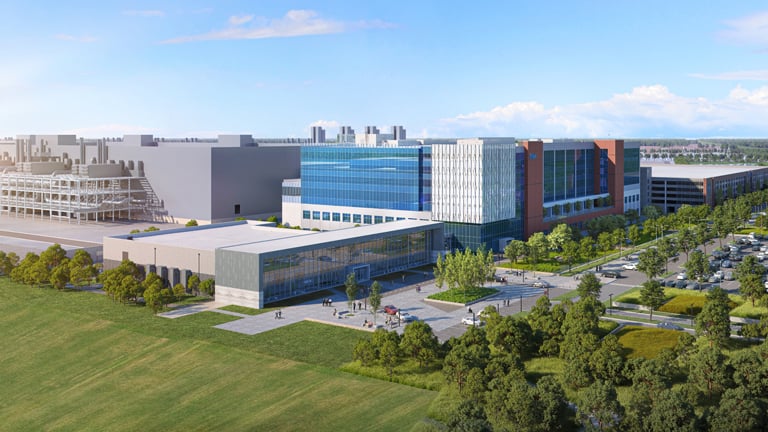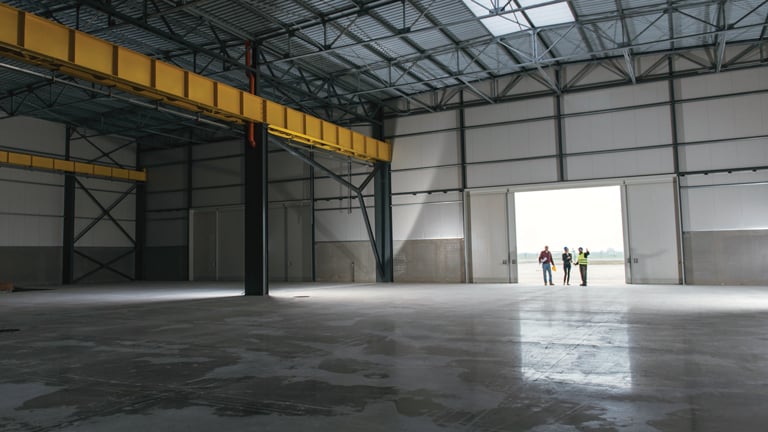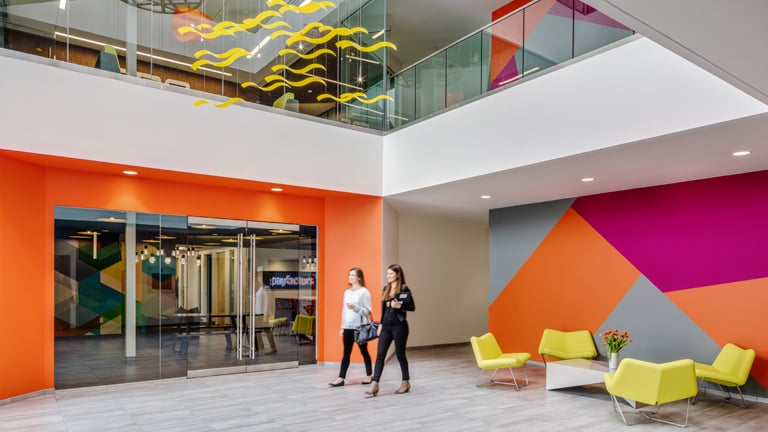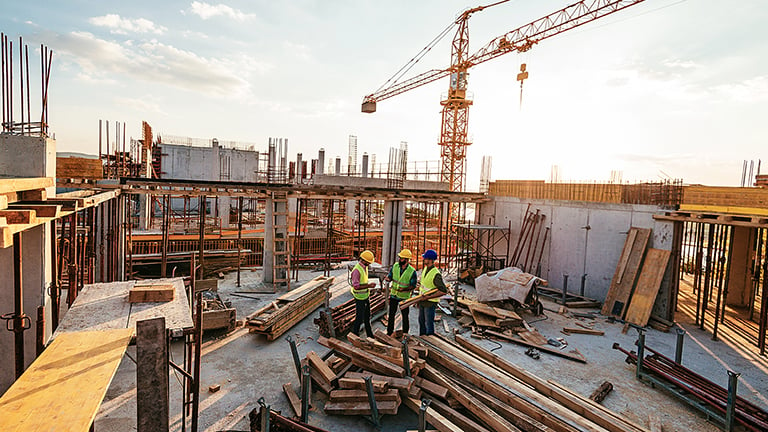The NAIOP CRE Sentiment Index for September 2025 is 56, an increase from the March 2025 score, indicating that respondents expect conditions for commercial real estate to improve over the next 12 months.

The NAIOP CRE Sentiment Index for September 2025 is 56, an increase from the March 2025 score, indicating that respondents expect conditions for commercial real estate to improve over the next 12 months.

Development and construction of new commercial real estate in the United States – office, industrial, warehouse and retail – generates significant economic growth at the state and national levels. This annual study, published by the NAIOP Research Foundation, measures the contribution to GDP, salaries and wages generated and jobs supported from the development and operations of commercial real estate.

The NAIOP Research Foundation commissioned this report to examine the trends behind reshoring and nearshoring and to evaluate how related investments in manufacturing are affecting North American markets for industrial real estate and its two largest components: warehousing/logistics space and manufacturing space.

The NAIOP Research Foundation commissioned this report to examine the economic benefits of commercial construction across four distinct CRE asset classes, namely industrial, retail and entertainment, office, and multifamily housing during 2021. The report also describes the benefits of commercial brokerage, property management and landlord operations.

Development and construction of new commercial real estate in the United States – office, industrial, warehouse and retail – generates significant economic growth at the state and national levels. This annual study, published by the NAIOP Research Foundation, measures the contribution to GDP, salaries and wages generated and jobs supported from the development and operations of commercial real estate.

This research brief, authored by Avison Young, reviews historical trends in port activity, local logistics employment, and vacancies, rents and absorption rates in adjacent industrial markets. Building on observations from the historical data, a regression analysis of the relationship between changes in port activity, truck traffic and industrial space absorption demonstrates that changes in import volume have a substantial effect on occupancy in port markets.

The forecast authors, Drs. Hany Guirguis and Michael Seiler, expect the still-hot industrial market to cool, and predict that the net absorption rate will continue to decline until it returns to the pre-pandemic trend. Read the full report from the NAIOP Research Foundation.

Development and construction of new commercial real estate in the United States – office, industrial, warehouse and retail – generates significant economic growth at the state and national levels. This annual study, published by the NAIOP Research Foundation, measures the contribution to GDP, salaries and wages generated and jobs supported from the development and operations of commercial real estate.search Foundation.

The NAIOP Research Foundation commissioned Steve Fuller, Ph.D., professor emeritus at George Mason University, to undertake a study of the 2020 mid-year economy and how second quarter shocks may influence commercial real estate development in the future.

Dividing and grouping the major metropolitan regions of the United States into ranked groups or “tiers” is a frequently used method to evaluate, prioritize and rank markets for investment. This project provides an understanding of the origins, methodologies and uses of market tier models.

The NAIOP Research Foundation commissioned this report to examine how local governments are preparing for fully autonomous vehicles and to explore how future AV related policies could affect the commercial real estate industry.

The NAIOP Research Foundation commissioned this report to identify ways that firms are revitalizing suburban office parks through redevelopment, rehabilitation and adaptive reuse. The author interviewed five developers who have recently updated suburban office parks in the United States and Canada to learn how they made these properties relevant for today’s market.

The impact of new development and of the ongoing operations of existing commercial real estate buildings in the United States – office, industrial, warehouse and retail – has grown to support 9.2 million American jobs and contribute $1.14 trillion to the U.S. GDP in 2019, according to a new report by the NAIOP Research Foundation.

The NAIOP Research Foundation commissioned this report to explore some of the contributing factors to the workforce shortage and how the construction and logistics industries can improve worker recruitment, training, productivity and retention.

Development and construction of new commercial real estate in the United States – office, industrial, warehouse and retail – generates significant economic growth at the state and national levels. This annual study, “The Economic Impacts of Commercial Real Estate,” published by the NAIOP Research Foundation, measures the contribution to GDP, salaries and wages generated and jobs supported from the development and operations of commercial real estate.

The main purpose of this report is to quantify the economic impact of commercial real estate investment in Canada, with a specific focus on estimating the impact tied to investment in the country’s largest Census Metropolitan Areas.

Development and construction of new commercial real estate in the United States – office, industrial, warehouse and retail – generates significant economic growth at the state and national levels. This annual study, “The Economic Impacts of Commercial Real Estate,” published by the NAIOP Research Foundation, measures the contribution to GDP, salaries and wages generated and jobs supported from the development and operations of commercial real estate.

The “sharing economy” has been receiving a lot of buzz across popular media, academic and business circles, and local government as well as social enterprises. As the label suggests, the sharing economy is a means of sharing goods, services, ideas, information and skills through a network of individuals, often facilitated through social networks via computers and mobile apps.

NAIOP surveyed the major players in commercial real estate for their predictions on market conditions with respect to the economy, capital markets and development potential. The executive summary results of this April 2011 survey including analysis provide useful insights. A webinar presentation of the results is also available.

Economic, real estate, oil and other crises can cause significant lack of confidence and recessions, which eventually affect office markets. This paper studies past crises and their effects on downtown office market trends across the U.S. and is pivotal in the estimation of current short and medium-term market responses.

The expected growth of the Hispanic population will impact the location and demand for commercial real estate in the United States. The report contains economic impact data for 50 states and major metropolitan areas.

This project is comprised of a form listing the sources of the contributions that office, industrial, office/tech and retail development make to their communities through taxes, job growth, etc. and instructions on how to locate the specific information needed to fill in the form and calculate the positive economic impact to your community.

Economic globalization, outsourcing, transnational property, economic base theory, global economic base category, GEBC, industrial properties
